
The dogs that could stop Mongolian grasslands turning to desert – return of the bankhar, traditional herder’s companion
- The bankhar, a guardian dog, is being reintroduced to protect livestock from predators and remove herders’ incentive to keep more animals and kill predators
- Herd animals have tripled in number in recent years, causing overgrazing and trampling the grass
If there’s one good thing about a 13-hour road trip across Mongolia, it’s the endless opportunities for a pit stop: you just swerve off the highway and onto the plains. All this wide open space is particularly helpful if your fellow passengers include 11 boisterous puppies.
Also in the car are two members of the Mongolian Bankhar Dog Project team, Soyolbod Sergelen and Batbaatar Tumurbaatar.
The non-profit organisation is reintroducing the ancient guardian dog to Mongolia’s steppe to prevent conflict between humans and wildlife and promote sustainable land use.
Livestock numbers on Mongolia’s grasslands have nearly tripled since 2002, according to the National Statistics Office – and this is taking its toll on the pastures.
The number of head of livestock in 2018 was over 66 million, about 41 per cent of which were goats, raised mainly to feed China’s demand for cashmere wool.
“Other than climate change, it’s the worst thing that has ever happened to the grasslands of the steppes of Asia,” says project founder Bruce Elfstrom, via Skype from his home in the American state of Connecticut.
“The goat is an eco-disaster due to how it eats, and what its hooves do to the soil.”
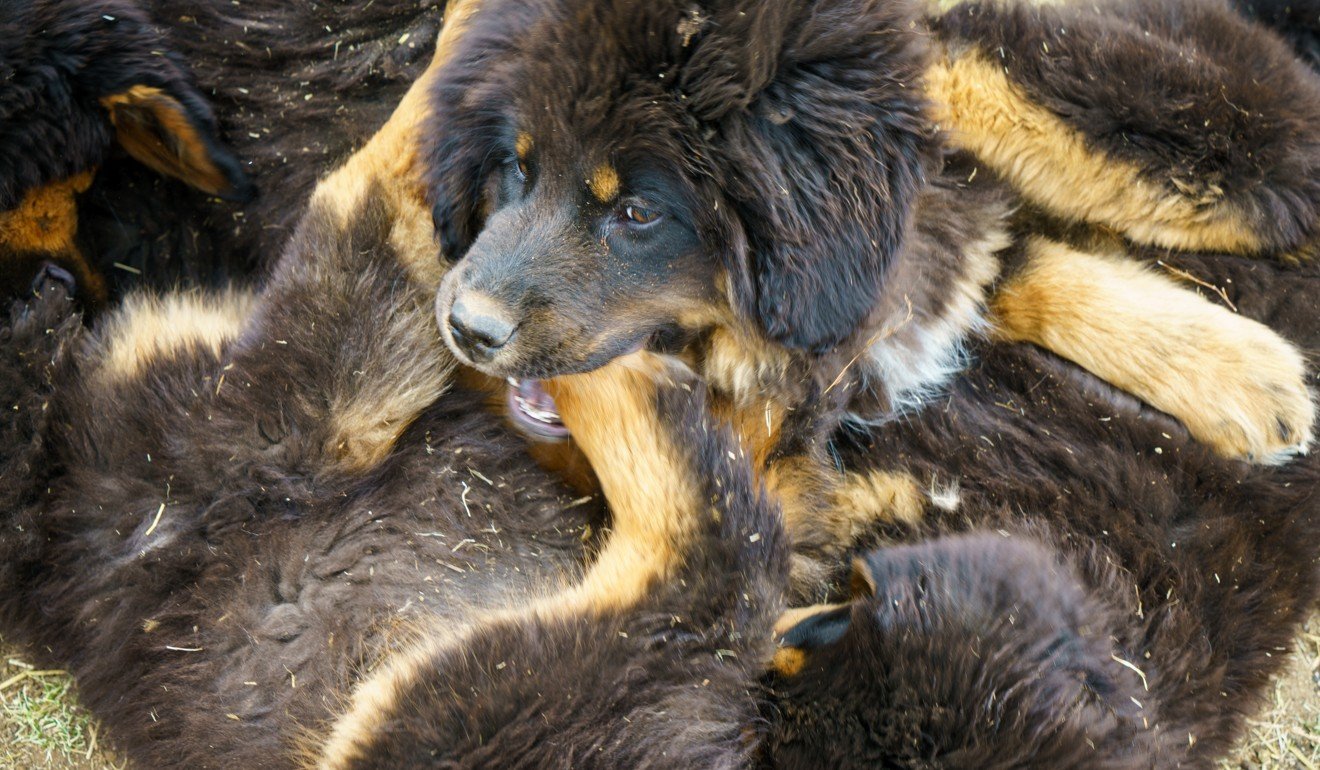
Average annual temperatures in Mongolia rose by 2.1 degrees Celsius between 1940 and 2014 – about triple the global increase, according to the United Nations.
Disabled dog rescues baby buried alive in Thailand by teen mother
Historically the only dogs in Mongolia, bankhar have long been prized by nomadic families as effective protectors against these predators. Their presence can reduce the number of animals lost to predators, and thereby lower the chances of herders killing these endangered predator species in retribution for their losses.

However, bankhar numbers fell as a result of several factors, including culls when herders were relocated under socialist rule in Mongolia, which lasted from the 1920s until the 1990s, and the introduction of modern breeds via Russia.
“Our main objective is to help the herders to continue a lifestyle during … climatic and socio-economic change,” says Elfstrom. “We’re looking to fix one of many steps that need to be fixed for the grasslands not to disappear and turn into desert.”
The bankhar is possibly the oldest domestic dog in the world, he says. It is uniquely adapted to Mongolia’s harsh climate, with some of the densest fur of any dog alive. As a landrace, it has evolved based on its environment, not through selective breeding according to the whims of humans, as most dog breeds evolved.
As a result bankhar live longer. While giant breeds such as Great Pyrenees or Swiss mountain dogs live for up to 10 years, Elfstrom has seen bankhar as old as 18.
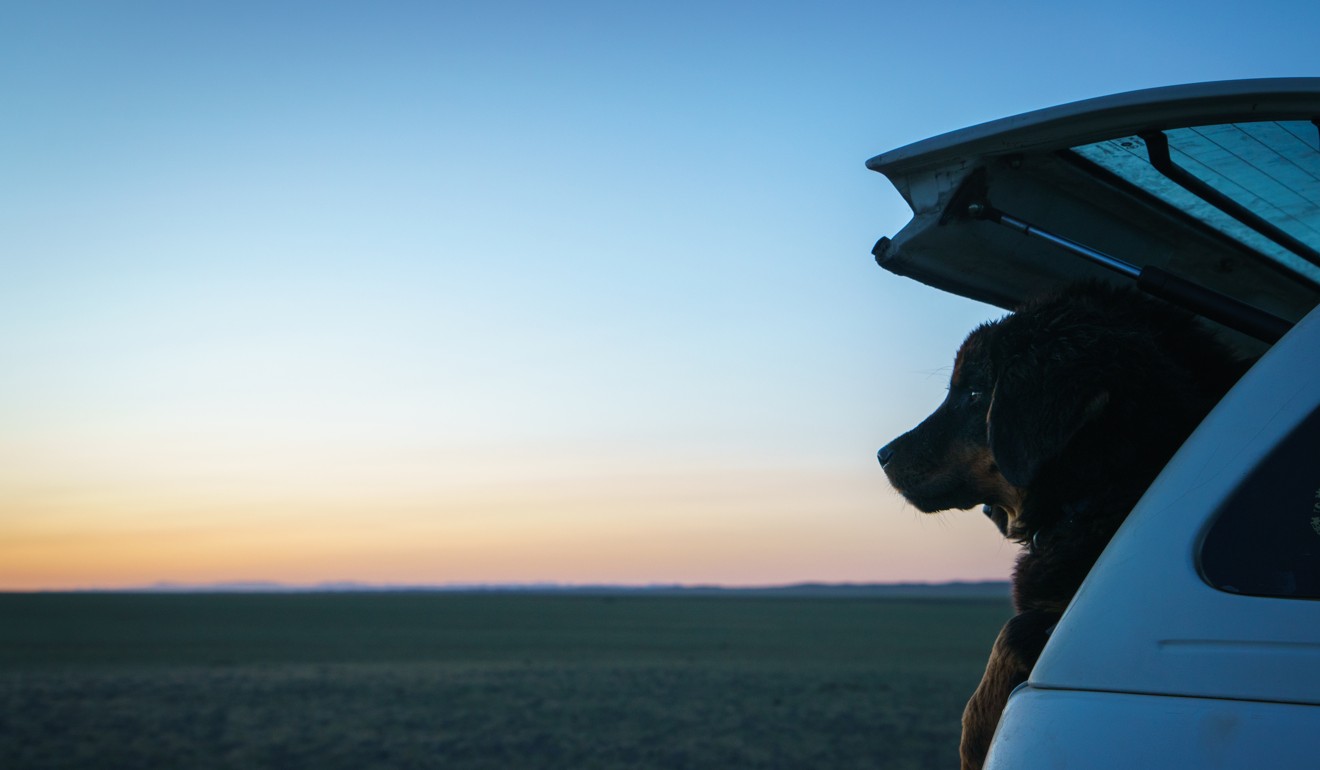
“We analyse all our dogs’ DNA and when we choose to breed them we do so to the dogs least related to them, so we are increasing their genetic diversity, which is already vast,” says Elfstrom.
Some 20 dogs are kept in spacious outdoor pens at the dog project’s facilities near Hustai National Park, west of the country’s capital, Ulan Bator.
Bus driver tells blind woman she can’t get on with her guide dog
Tumurbaatar, a former herder with a background in ecology and conservation biology, runs the operation with the help of caretaker Miiga. The adult canines are heavy – weighing up to 58kg – with a regal air for the most part, and are friendly and playful. “Bankhar are good guardian dogs because they are very calm – unless they sense real danger,” says Tumurbaatar.
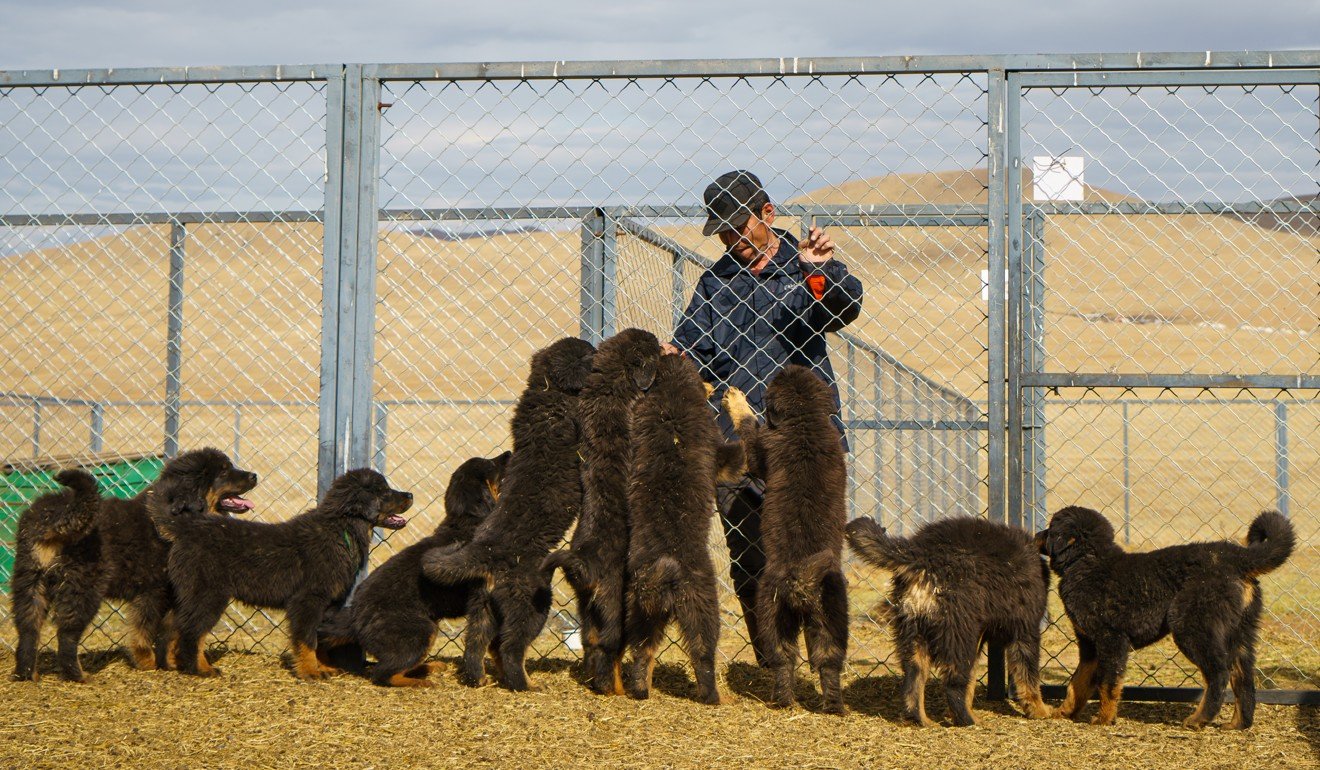
In the car, he and Sergelen discuss plans: we will be delivering these puppies to new owners and checking up on six previously located adult dogs.
As we pass Ulan Bator, we make the slow transition from traffic and pollution on endless potholed motorways that pass sprawling districts of gers – the traditional round Mongolian tent – to off-road dirt tracks and open steppe.
Several hours in, we stop at a well, where the puppies, a little wobbly and dirty but in high spirits, scamper about, whimpering with excitement, and thirstily take over a trough of water from a herd of baffled cows.

In the following week we are to cover some 2,040km, Omnogovi province’s low, jagged brown mountains a constant backdrop. A lack of phone reception, GPS or fixed addresses makes finding nomadic families a challenge, and we often rely on rough coordinates and Sergelen’s keen eyesight to spot them in the distance.
Mongolian tradition is in danger of being lost. But the bankhar is one tradition that may come back successfully
The herders we meet speak highly of their adult bankhar. So far, the dog project’s data shows an average 93.7 per cent reduction in livestock losses to predators, based on a sample size of 30 dogs.
One herder, Batchuulun Erdenechuluun, 38, used to have problems with wolves. Now, with two dogs protecting his herd, he has no losses to report.
Japan’s home-grown dogs face extinction in favour of ‘cuter’ breeds
“Wolves, lynx, foxes – because of the proximity to these rugged mountains we have plenty of predators in this area,” he says, sitting in his ger, handing us vodka and snuff.
“Even eagles can snatch baby goats. In my experience, the bankhar are making a difference.”
Sergelen interviews him, taking notes on the dogs’ progress, while Tumurbaatar goes outside to measure, check and weigh them.
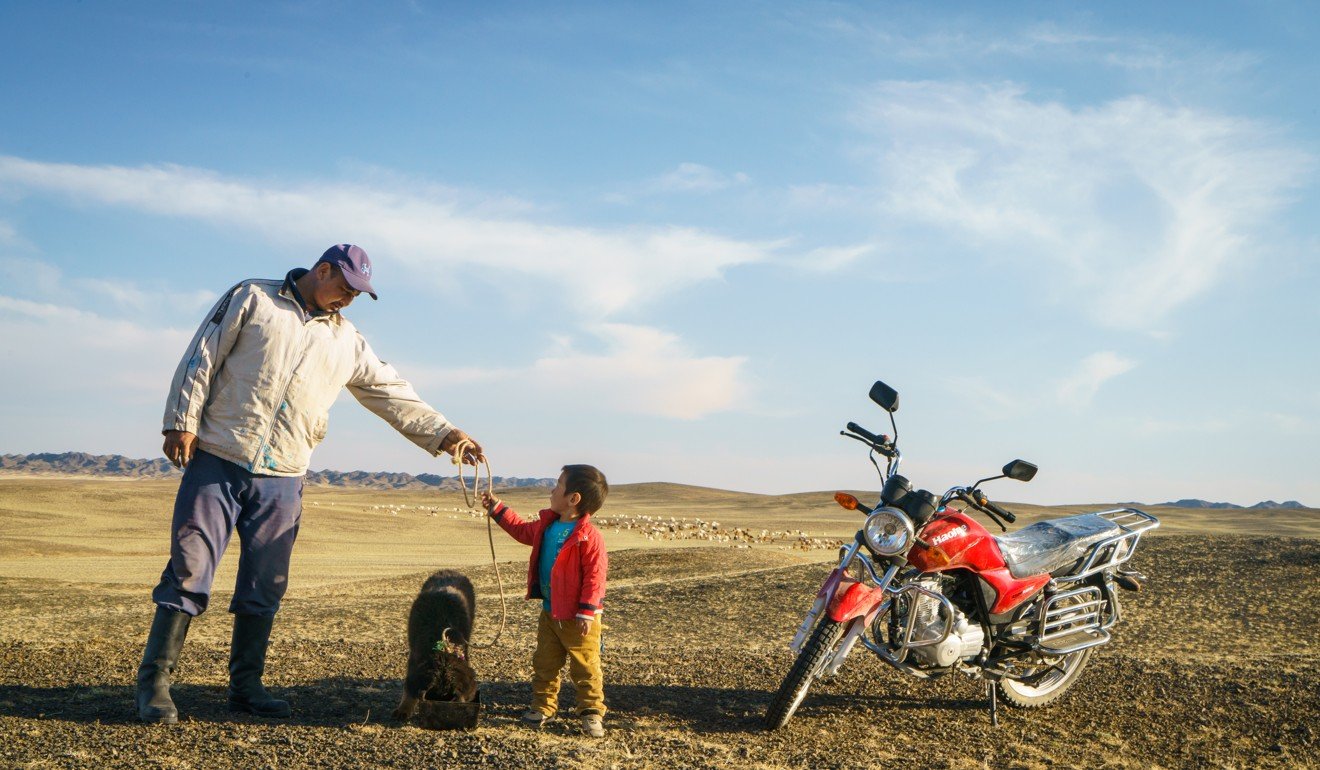
The bankhar are given to the herders free of charge, once they sign a contract outlining a strict protocol that ensures the dogs are properly trained and cared for.
We visit a young family and present them with their new puppy, which they name Honch. After some hesitation, he gulps down the ritual milk they offer him, much to the delight of their four-year-old son, Bayaraa.
The pup gravitates naturally to the pen where the lambs and goats are kept: since birth he has been trained to bond more with livestock than humans.
Head of the family Bayasalbadrakh Dagiimaa, 32, a medal-winning wrestler, seems to approve. “I like the manner, calm behaviour, and gaze of this puppy,” he says.

The herders are serious people. From the moment they wake up at 5am, everybody has a role to fulfil.
This includes Bayaraa, who follows his father out to the pasture and helps his mother at the ger.
“Many young people go to the city, but as far as I can see it’s not always successful,” says Dagiimaa. “The herder’s way of life is the happiest.”
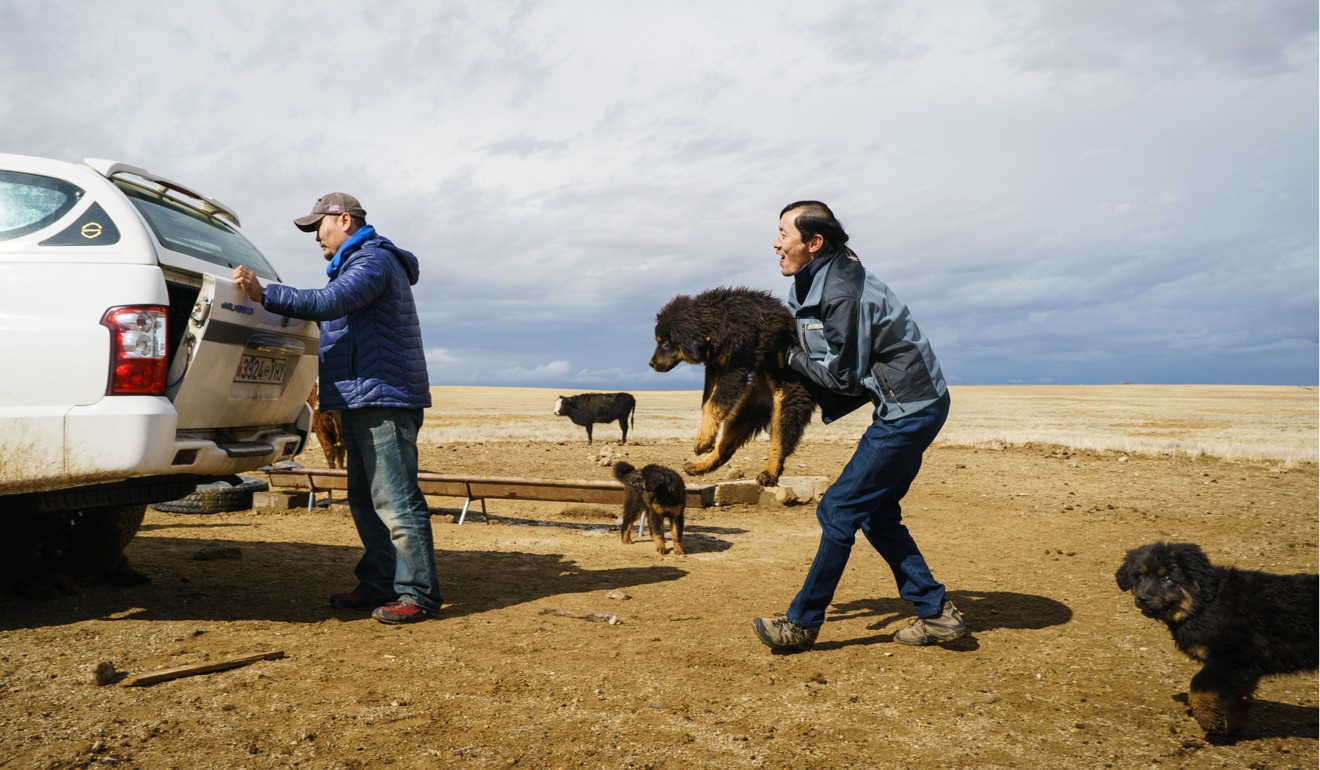
Erdenechuluun says: “Instead of being unemployed in the small towns I see great potential for these young people to become herders.
“Of course there are lots of difficulties that a herder faces. But it’s important to have the stamina and patience to overcome this.”
A wolf in dog’s clothing? Chinese zoo brings doubting visitors to heel
The families are busy harvesting cashmere when we visit: goats lie screaming as their coats are combed brusquely, giant tufts placed into sacks to be taken to Nomgon, the nearby administrative centre, for sale.
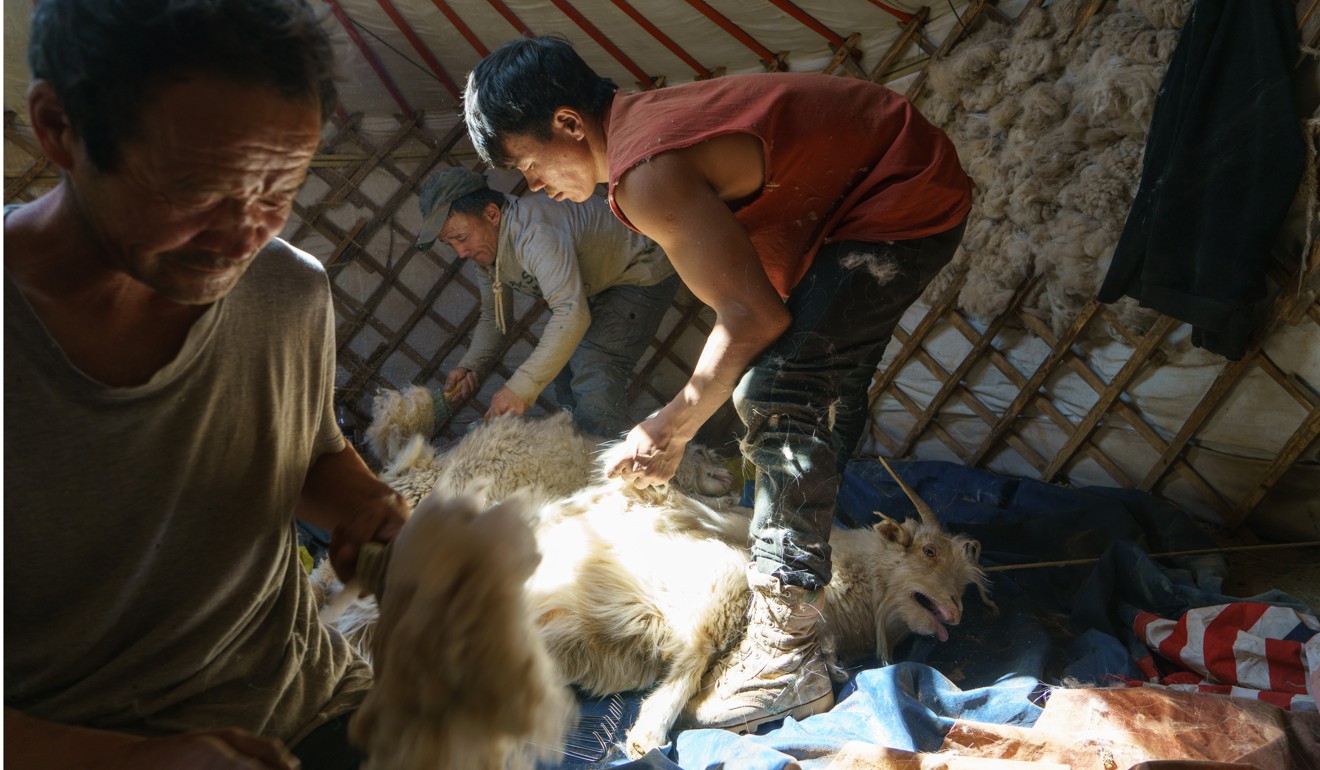
The project places dogs at several sites in Mongolia. In the South Gobi region, it is collaborating with global NGO the Wildlife Conservation Society, which is leading a sustainable cashmere project in Nomgon with a local co-op. Only members of the co-op are eligible to receive a bankhar in this area.
“Our reason is to protect the wildlife and its habitat, because herders’ livestock share rangeland with wild species,” says project manager Chantsallkham Jamsranjav.
“Bankhar dogs can help because they protect the livestock, and they help herders to know where the predators are and move away,” she adds. “So, in an indirect way, they can also help to free the rangeland for the wildlife.”

The conservation society links herders to international buyers. Part of the agreement involves planned rotational movement from one pasture to another, to allow grasslands to rest and recover from grazing.
The rescue dogs that can barely walk, and how hydrotherapy helps
To receive a rare bankhar is an important incentive to adhere to the sustainable herding practices.
“Every Mongolian herder wants a bankhar,” says Tumurbaatar. “Their ancestors used to have one and they are reputed to be the most effective livestock guardians.”
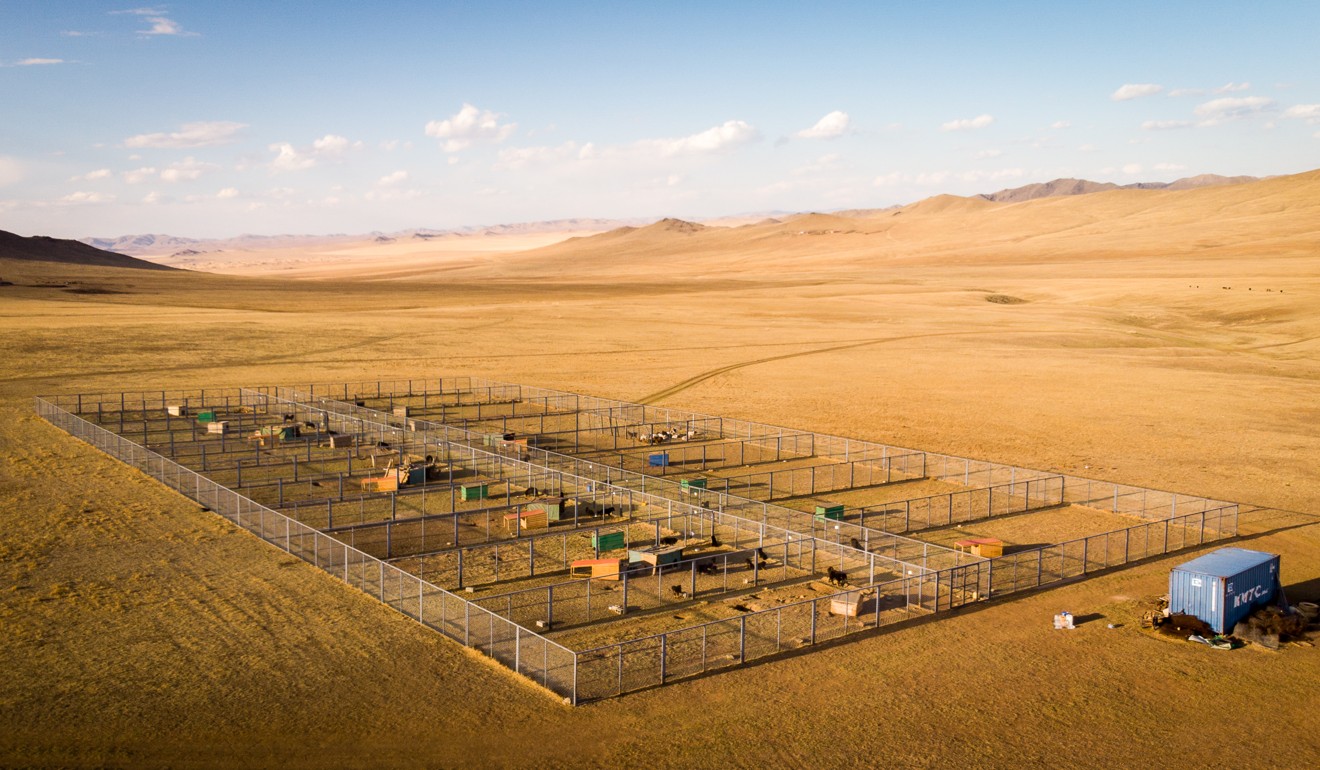
Dr Munkhasan Tsevegmed, who works for Mongolia’s Ministry of Food, Agriculture and Light Industry, says the government is also offering incentives in an effort to revive the nomadic lifestyle, such as providing livestock starter kits for aspiring herders, digging more wells, offering subsidies and connecting herders with buyers. An offer of a bankhar could be another incentive.
“If the dogs protect the herd, they don’t lose the animals to the predators, so the herd size will not increase much, because they have more animals they can sell,” Tsevegmed says.
Dogs of the rich fly in style on private jets
By the end of the first day with his new family, Honch collapses in the dusty pen, his full tummy rising and falling in his sleep, as the goats and sheep observe him curiously. The sheer distances involved in following the herd are new to him, but he will grow fast.
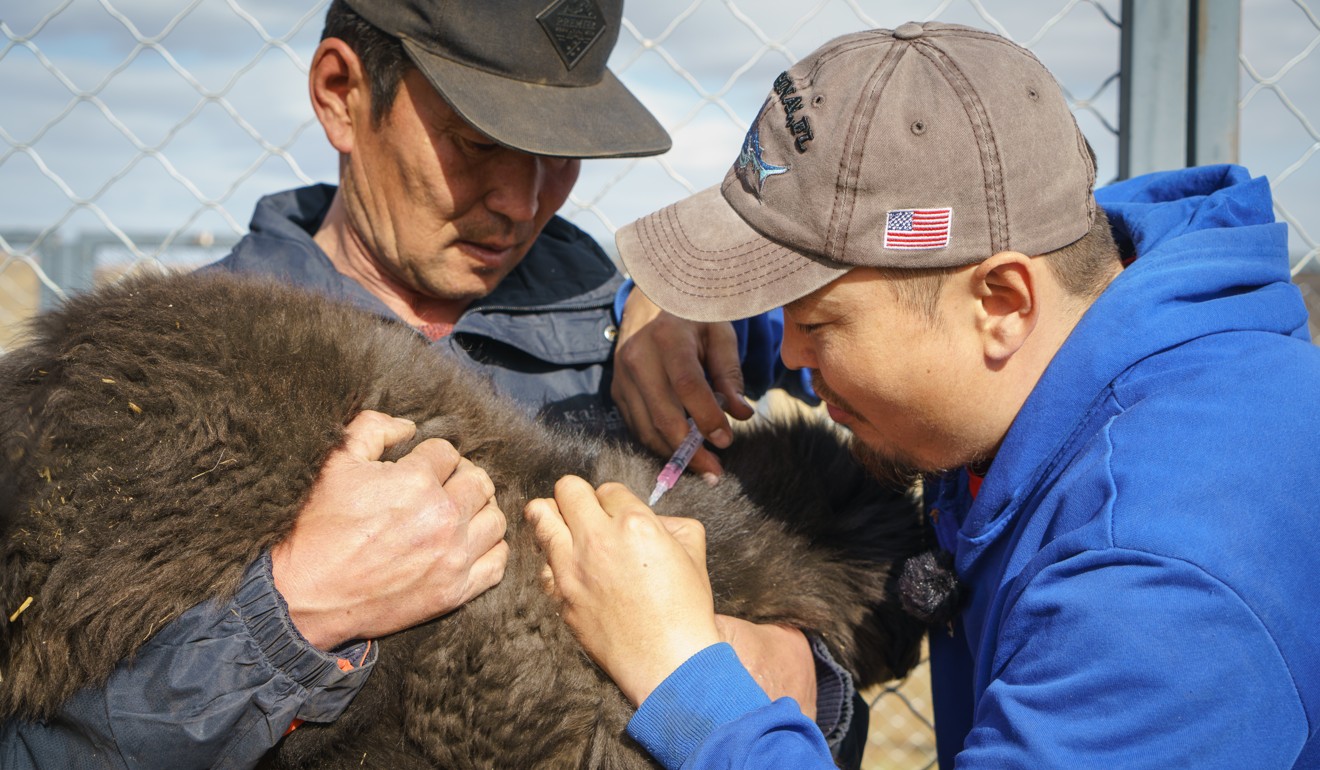
Looking at this scruffy black heap, it is hard to imagine that he holds one of the secrets to saving Mongolia’s grasslands – but he is certainly ready to help.
“Mongolian tradition is in danger of being lost. But the bankhar is one tradition that may come back successfully,” says Dagiimaa. “I think Honch will make a good guardian dog. All I have to do is train him well. Now it’s my turn to do my part.”
For more information on how to support the Mongolian Bankhar Dog Project: bankhar.org

